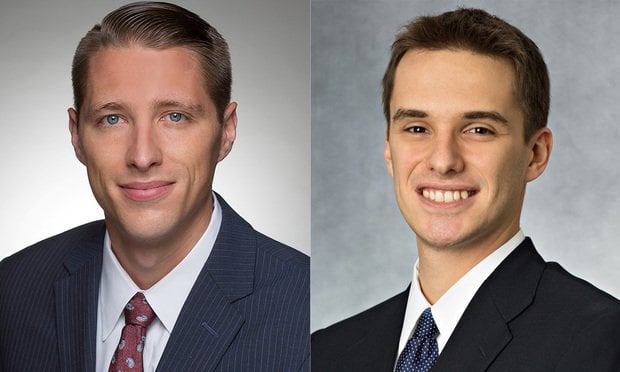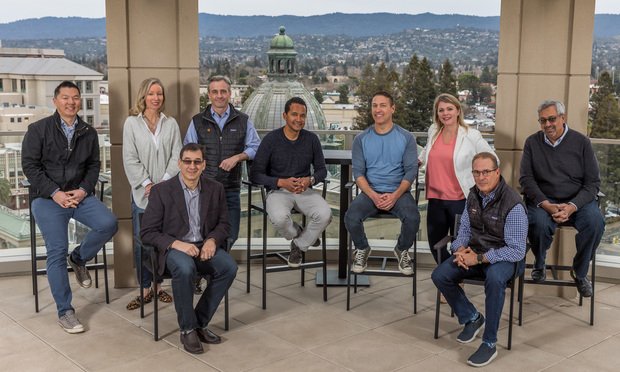Once upon a time, the demarcation line between Dallas' Uptown submarket and CBD was between Olive and Harwood streets, directly north of the Woodall Rodgers Freeway. The freeway, which is built on a diagonal from the northeast to the southeast, links US-75 on the east to Interstate 35 E on the west.
No more. Thanks to factors such as the completion of the Arts District (including the relatively new Winspear Opera House and the AT&T Performing Arts Center) and resurgence of nearby, mixed-use Victory Park, that the demarcation line between the Uptown and Downtown submarkets has moved south across Woodall Rodgers. "Ross Avenue [some two blocks south of Woodall Rodgers] is considered the new border of Uptown," says Creighton Stark, SVP of investment sales with Colliers International's Dallas office. "Everything north of Ross today falls into the Uptown market."
This moves the submarket demarcation line about a mile south. So what, you might ask. Well, it's important from a commercial real estate viewpoint, as rents and transaction costs are noticeably higher in Uptown compared to what's going on in the CBD. "The prices are at least two to three times higher in Uptown versus Downtown," says Ben Lurie, a Colliers analyst. "If you're looking at a lease rate of $15 per square foot Downtown, it'll be $30 per foot in Uptown."
Another potential catalyst—a major one—fueling this trend is a 5.2-acre park currently under way, Klyde Warren Park. "Connectivity is central to the Park's purpose," according to the project's website.
There is some truth to this. Klyde Warren Park is a deck park being built over Woodall Rodgers Freeway between Pearl and Saint Paul streets. And once this park is completed—scheduled for fall 2012—it will provide a natural, walkable link between the Uptown and CBD submarkets and could even blur the lines between these two submarkets.
"The park will be the new 50-yard line for the Dallas commercial real estate market," says Ramsey March, vice president with Stream Realty Partners LP in Dallas. "Some people call it center ice, some call it Main and Main. Whatever you call it, from this point forward, people will start talking about how many blocks off the park your office or your building is."
Adds Stream SVP and co-manager Sarah Erickson: "That dividing line is gone, and we're seeing the markets merge. It's no longer 'north of Woodall' or 'south of Woodall,' but how many blocks from Klyde Warren Park."
CBRE's EVP, Phil Puckett, put it a little differently. "At one time, the core of Downtown was Elm and Main Streets," about six blocks south of Woodall Rodgers, says Puckett, who works in the firm's Downtown office. "But the core has shifted to the north with the Arts District growth." In fact, he goes on to say, the area's epicenter is now at Woodall Rodgers—right where Klyde Warren Park is being built.
Construction on the park began in 2009. Upon completion, it will be owned by the City of Dallas and managed by the Woodall Rodgers Park Foundation. Some of its attributes will include a performance pavilion, a dog park, a children's discovery garden and playground, walking trails, water features and a restaurant. Stark believes the park's attractions will increase traffic and bring a new population into the area, in addition to the population that's already frequenting the Arts District. "When you have something like this, and the energy that's around it, the entire submarket benefits."
Needless to say, the move of the CBD/Uptown demarcation didn't happen overnight. Nor does a five-acre park, in and of itself, move submarket dividing lines around. Erickson says the shift began at the end of the previous real estate cycle, around 2006 and 2007. During that time, the Arts District became a reality, after years of talk. Furthermore, there was a subtle difference in rent increase as tenants moved just south of Woodall Rodgers.
This is not to suggest, however, that all is rosy in Uptown. The submarket has attracted a lot of new tenants in recent years, and the threat of shortages, particularly for tenants seeking large contiguous space, is real. That might not seem an odd concern now, while Uptown's vacancy hovers at 16%. But Puckett sees that shrinking to below 10% by early 2013, and then the squeeze will be on. "A lot of buildings in the submarket that were 50% leased this time last year are now 93% to 94% leased," Puckett continues, adding that there is only one building in Uptown with any kind of space left.
Adding to the trend is anticipated nearterm lease rollovers. "About seven million square feet of leases are expected to roll between 2013 and 2017," Puckett says. Much of that roll will include some of the larger tenants in Downtown. "They might stay, or they may become lead tenants in some of those Uptown and Arts District projects."
In Uptown, new projects have been announced in anticipation of the demand. In late 2011, Crescent Real Estate Holdings hired architect César Pelli to design a $225-million office, retail and residential project at McKinney and Olive avenues; if the design stays to plan, it will add some 400,000 square feet of office to the market. Harwood International, which owns a chunk of Uptown land, is planning a 27-story office and 31-story apartment tower at Wolf and McKinnon Streets, near the start of the Dallas North Tollway. Hall Financial Group is prepared to launch construction on a 500,000-foot spec office tower on Flora Street in the Arts District, across from the Meyerson Symphony Center. Billingsley Co. also wants a piece of the Arts District, and has proposed its 450,000-square-foot Two Arts Plaza at Routh Street and Woodall Rodgers. And KDC is working with the owners of Victory Park to develop 400,000 feet of office.
Certainly these announced projects will add much-needed square footage to a submarket in which tenants are hungry for the space. But folks who are well versed in office construction understand it generally takes about 18 to 24 months for a building to be completed. Even if the projects mentioned were to break ground right now, the paint wouldn't be dry until late 2013 or early 2014, at the earliest. Further, many of these projects don't have announced start dates. KDC has said it will break ground in late 2012 on the Victory project, as long as preleasing requirements are met.
In reality, "the costs of developing a new building, including land in Uptown, are extremely high and require high rents to justify," Puckett points out. Though tenants are willing to pay the higher prices of an Uptown address, it's not certain whether the rents would justify the construction.
And none of this takes into account the fact that lenders are still pretty skittish about dishing out money to developers. "Most of the lenders require a 50% prelease before they're willing to make a loan," Puckett says.
Does this mean tenants searching for more space might move south of that Uptown/Downtown demarcation line? Puckett acknowledges that, for a tenant looking for 25,000 square feet, there are a lot more options Downtown (17 in the CBD versus four in Uptown). Erickson, in the meantime, points out that in the Uptown submarket, there are only two blocks of space measuring 50,000 square feet or more fronting Klyde Warren Park.
As such, Erickson says, the submarket has shifted in landlords' favor. Because of this, "we're putting expiration dates on proposals" for tenants, she says. "Once tenants identify a building in that submarket, they have to hustle to beat out the competition."
And space will continue to be in high demand, especially in buildings near and fronting the park. March goes farther, predicting that once the park is open, Dallas could see the creation of a new micromarket or submarket that would justify higher rents. "You could call it the Park-Arts District submarket," he says.
March believes that, given the huge competition for space both around the park and north of Ross Avenue, there is a great opportunity for top-tier CBD buildings. "This is a good time for those building owners to retain current tenants and attract some of the larger ones that might otherwise migrate north of Woodall Rodgers or even Ross Avenue," he concludes.
© Touchpoint Markets, All Rights Reserved. Request academic re-use from www.copyright.com. All other uses, submit a request to [email protected]. For more inforrmation visit Asset & Logo Licensing.






